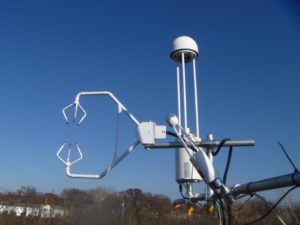 Wetlands occupy a unique niche in the global carbon cycle. While wetlands typically sequester relatively large amounts of carbon, they are also the single largest source of methane (a powerful greenhouse gas) worldwide. So we often think of wetlands as being carbon sinks but global warming sources.
Wetlands occupy a unique niche in the global carbon cycle. While wetlands typically sequester relatively large amounts of carbon, they are also the single largest source of methane (a powerful greenhouse gas) worldwide. So we often think of wetlands as being carbon sinks but global warming sources.
Much of my research focuses on the carbon cycling responsible for methane formation, consumption, and transport. I use a combination of specialized chambers and the eddy covariance approach to measure biogas fluxes associated with ecosystems.
Wetlands are particularly interesting to me but present unique challenges. Unlike forests, the surfaces of wetlands frequently are characterized by a variety of land cover types (e.g. open water, mud flats, macrophyte vegetation, etc). Each land cover type may have different surface fluxes associated with it, all of which must be considered when determining the carbon and warming behavior of wetlands.
We have ongoing monitoring work at the Solvay Settling Basins in Camillus, NY where we are using the eddy covariance approach to track methane emissions and carbon dioxide fluxes associated with an inland salt marsh. We are looking for frequency response phenomena associated with the turnover of carbon substrates in the system (i.e. the effects of drought or heat waves on carbon fluxes) and have found exciting results around the effects of surface ‘greenness’ on carbon turnover in these systems.
